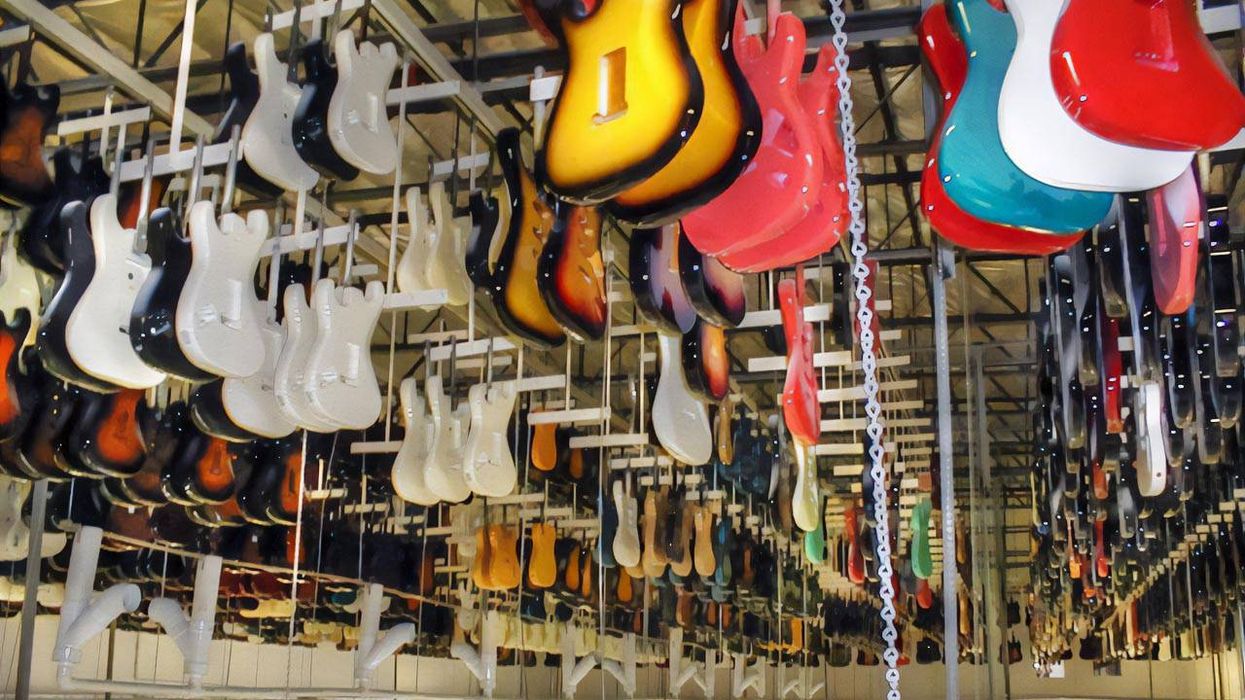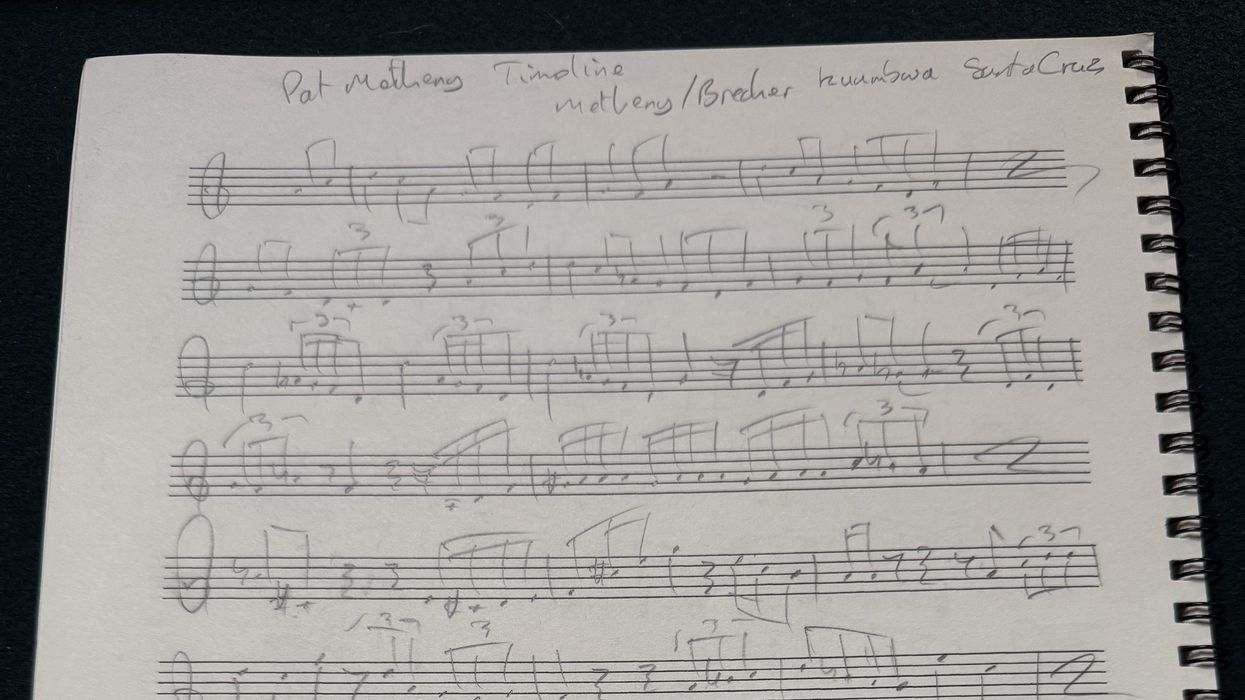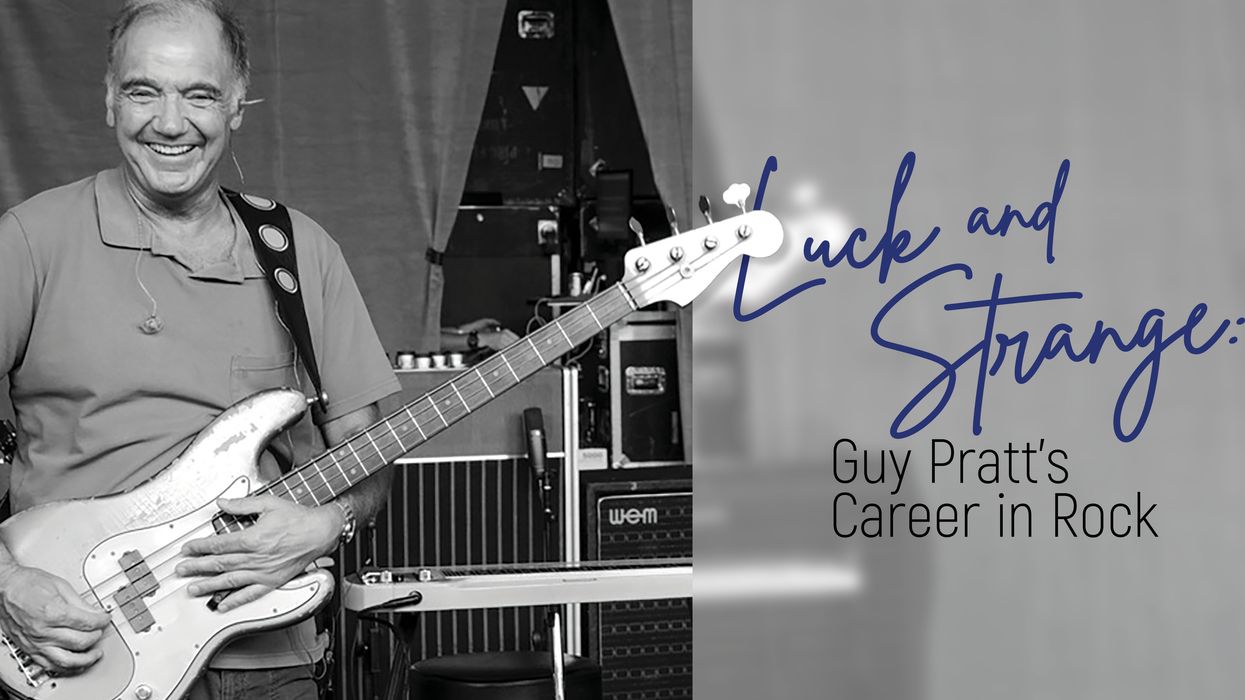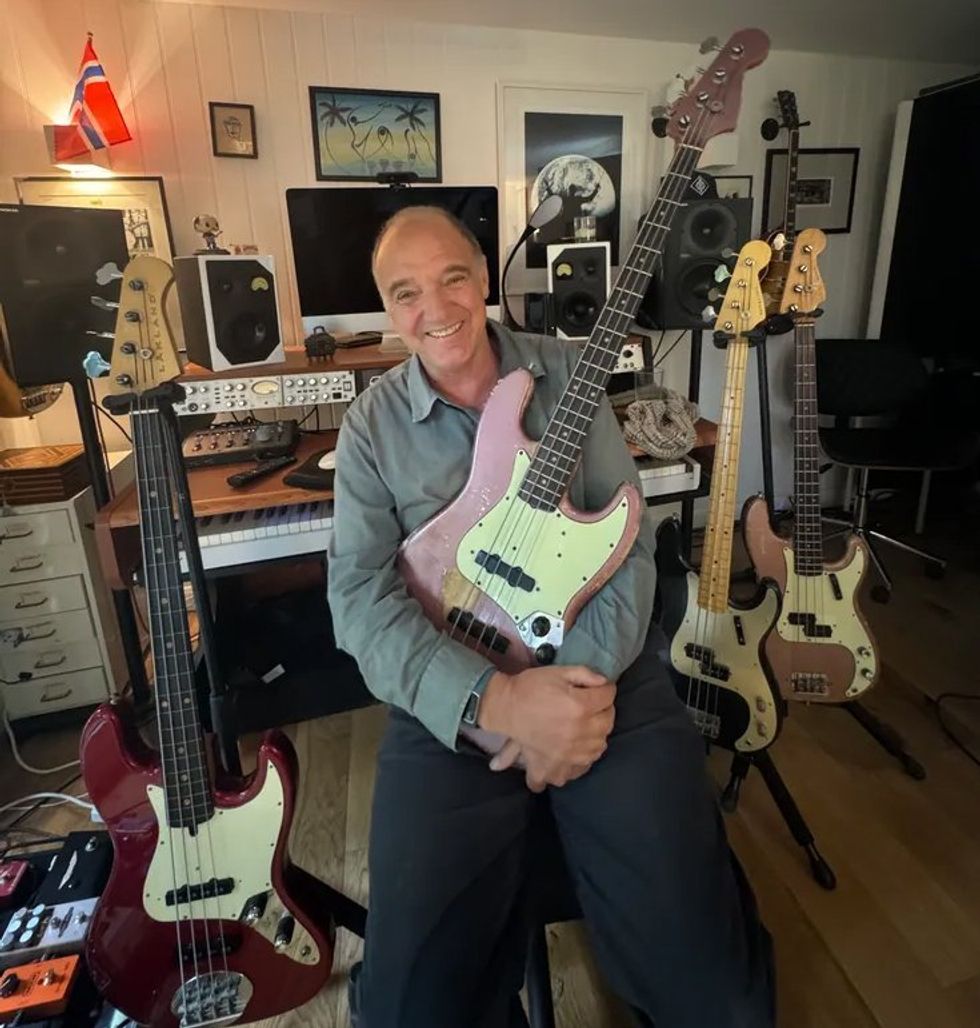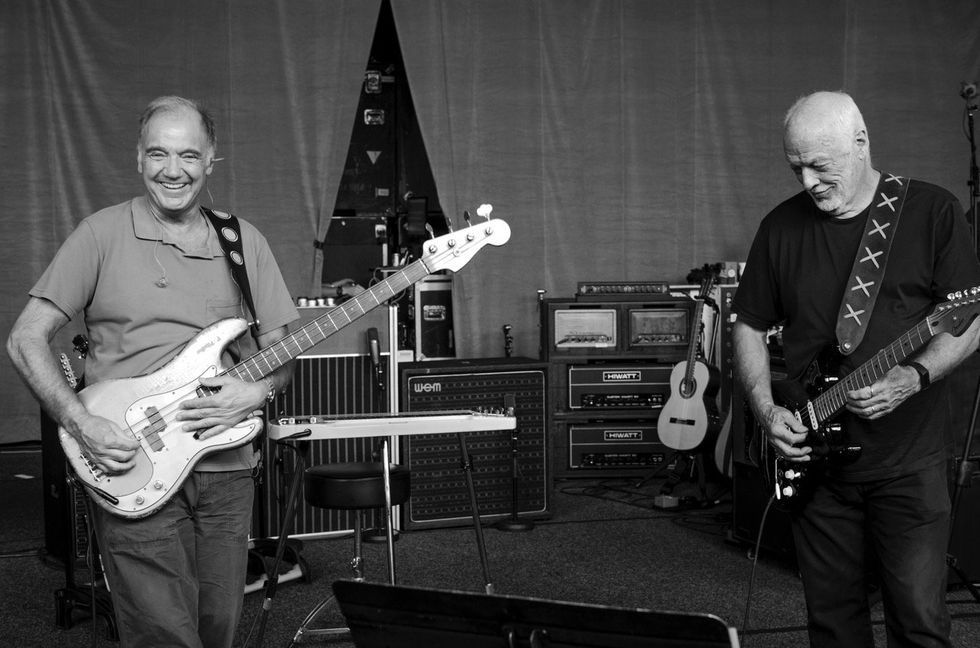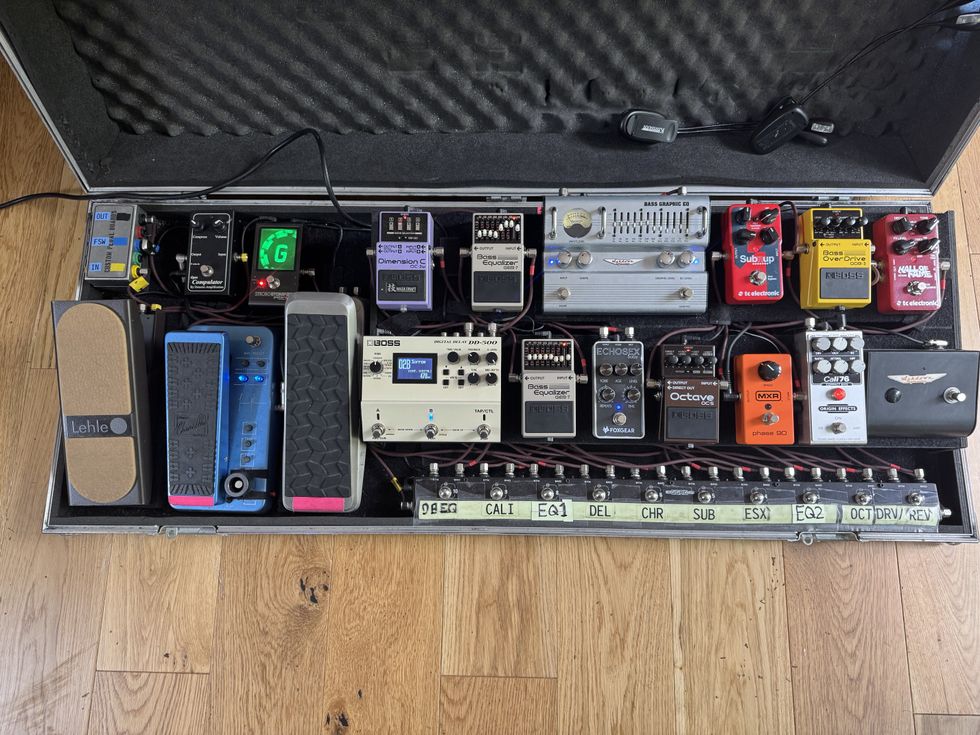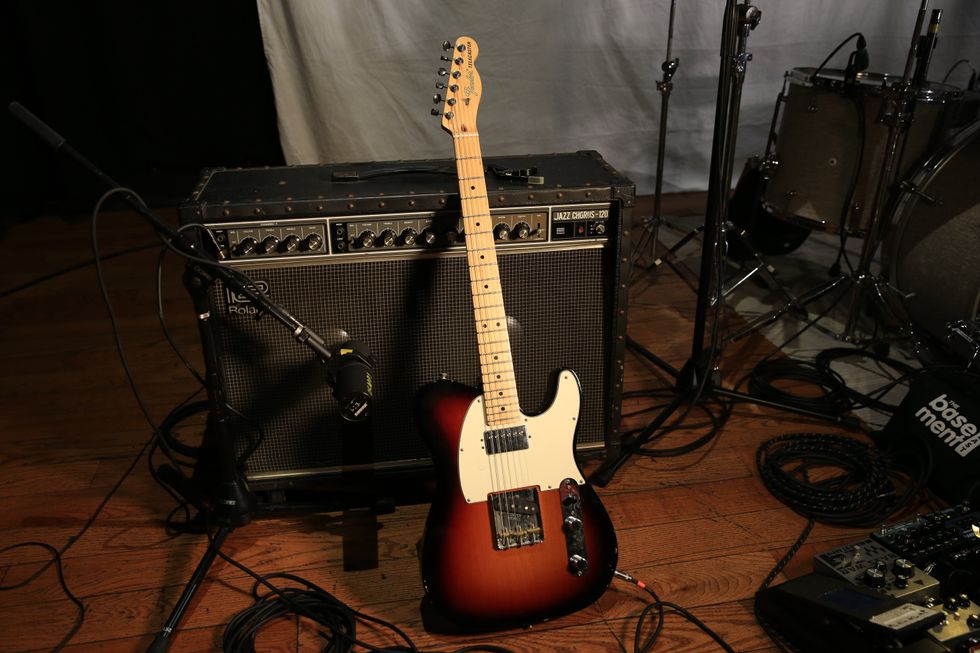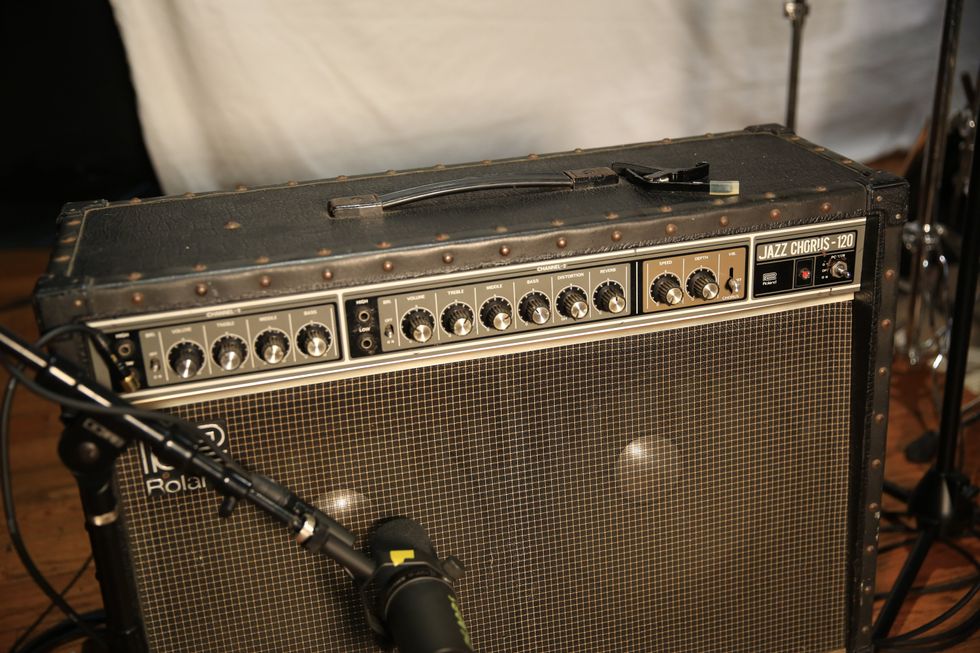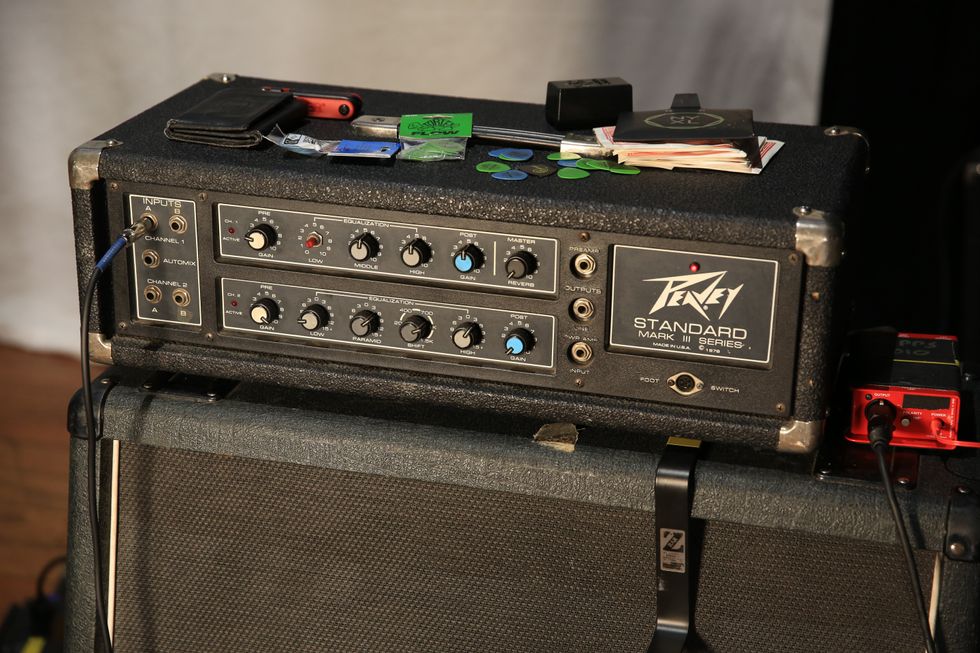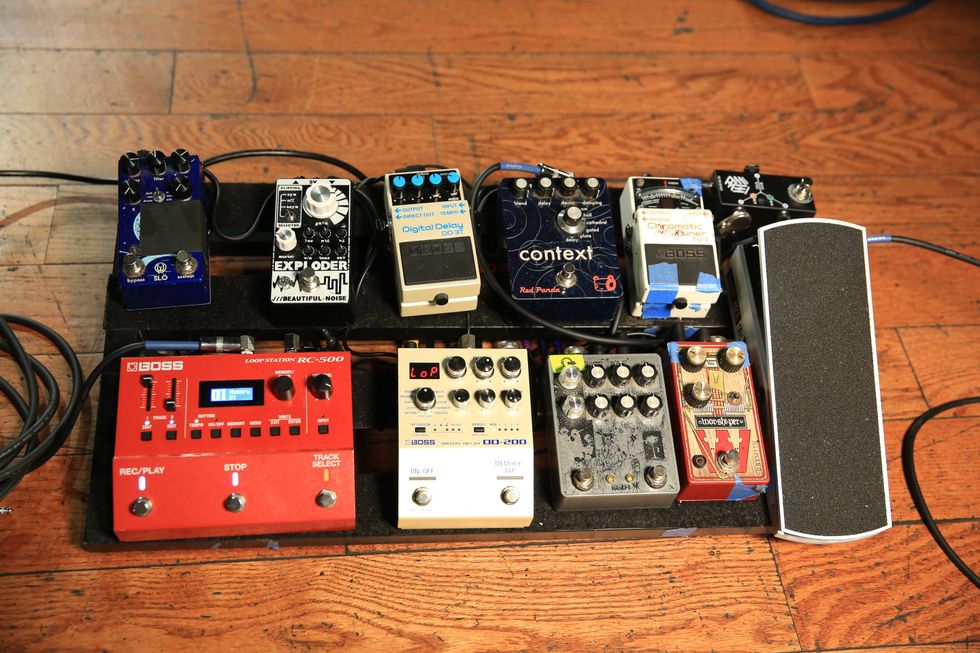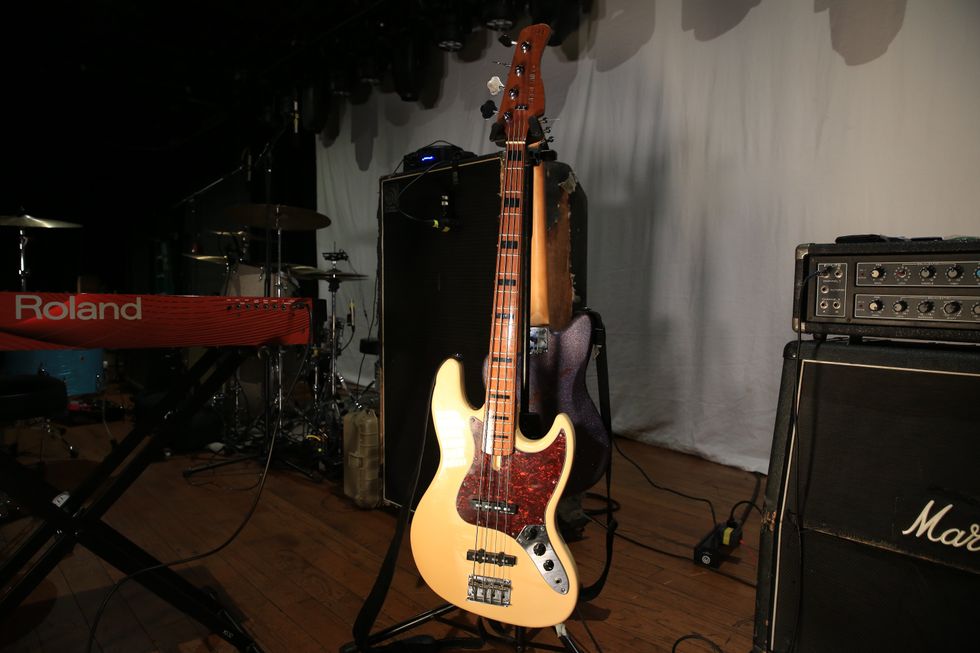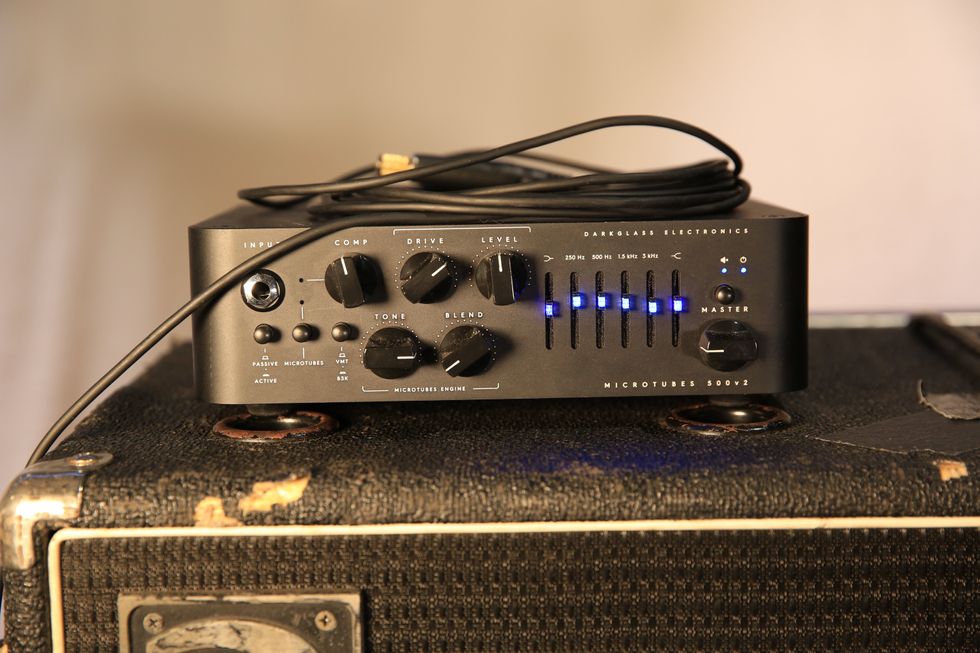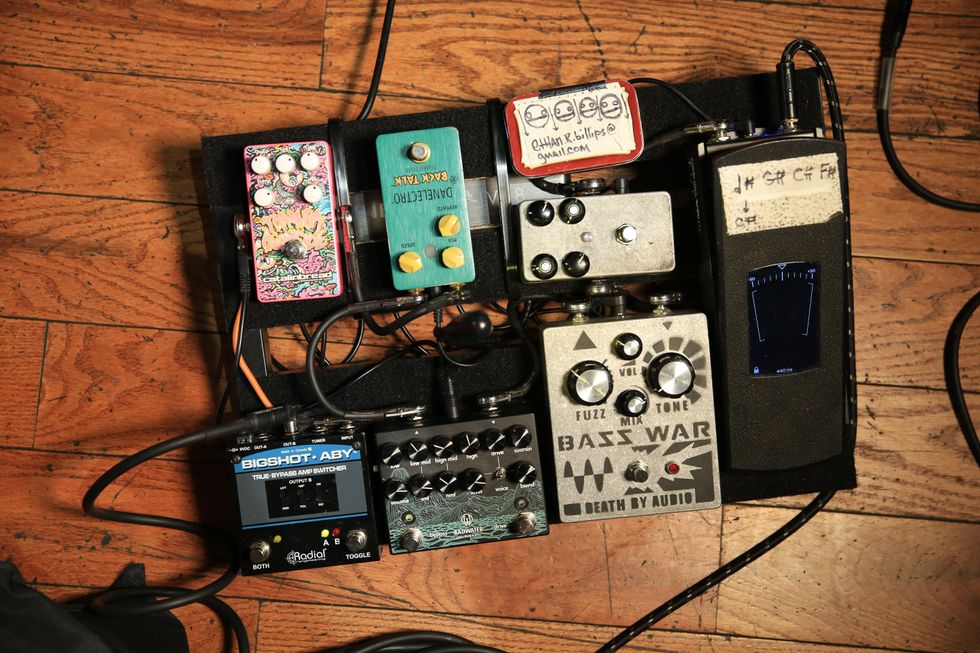Clip 1 - Bass in passive mode. Neck pickup soloed.
Clip 2 - Bass in active mode. Pickups blended with slight bass and mid boost.
If you watch John Bohlinger’s recent Rig Rundown with Tim Commerford, you’ll enjoy a lengthy conversation about the raging bassist’s pedals. At the front of Commerford’s effects board is a white wah pedal that, as he puts it, “looks like it’s made for a baby’s foot.” Humor aside, the pedal in question is no child’s toy. It’s the latest addition to Dunlop’s Cry Baby family, called the Mini Bass Wah. And it contains useful features for bassists that are packaged into a frame about half the size of a conventional Cry Baby. Bassists from Bootsy Collins to Cliff Burton have used wah pedals to add articulations and unique textures to their bass lines, so I was excited to see if the Mini Bass Wah would continue or improve on tradition.
A Brand New Rocker
The wah effect on a Cry Baby is typically activated by stomping on a switch located under the toe of the foot control. In lieu of tradition, the Mini Bass Wah employs a spring-loaded rocker pedal and silent auto-return switching technology. This system instantly engages the wah as the rocker control is depressed.
When the foot raises off the pedal, the rocker automatically returns to an upward position—bypassing the wah effect. Dunlop also utilizes this technology in the full-size 105Q Bass Wah and a minority of other Cry Baby models.
The Mini Bass Wah contains similar circuitry to the 105Q, and the side of the aluminum chassis has two knobs. The volume control allows a player to balance the sound level when the effect is engaged, while the neighboring Q control adjusts the width of the wah frequencies. Higher Q settings deliver dramatic sweeps by enhancing brighter frequencies and vocal-like qualities. Lower settings are darker, with subtle filtering.
Dunlop’s auto-return delay control is a welcome feature. This dial inside the Mini Bass Wah determines how long the wah effect rings out after being disengaged. Proper setting of the control creates near-seamless transitions from the effected and native signal.
Ratings
Pros:
A fun, interactive wah pedal with expressive effects and cool features.
Cons:
Auto-return switching takes some getting used to.
Tones:
Ease of Use:
Build/Design:
Value:
Street:
$119
Dunlop Cry Baby Mini Bass Wah
jimdunlop.com
Little Wonder
While exploring the Mini Bass Wah at home, my signal chain consisted of a Ritter R8 5-string plugged into the Cry Baby, and then into a Bergantino B|Amp paired with a Bergantino HD112. Keeping the pedal in its factory setting, I set the Ritter to passive mode and balanced the effect with the volume control. Within seconds, the Mini Bass Wah inspired funky, filtered sweeps and wacky wah-laden warbles. However, I found the auto-return switching to be a little touchy as it briefly interrupted the signal with a split second of silence. This is where the auto-return delay control is a big benefit. I simply opened the bottom plate and adjusted the rotary control so the effect would ring out enough to create a smoother transition from effect to bypass mode.
I began to get comfortable with the nuances of the Mini Bass Wah over time, similar to someone getting used to a clutch on a manual transmission. Rocking the pedal up and down, I adjusted the Q control to a width that leaned towards brighter sounds, which allowed me to strum sharp, rhythmic wacks or slow, enveloping wahs.
Once I felt familiar with the pedal, it was time to take it to the stage for a soul gig. I again connected the Ritter bass/Dunlop duo to a Bergantino B|Amp and paired it with Bergantino HD210 and HD112 cabinets. I pushed the Q control to almost maximum for brighter sweeps and balanced the volume for level consistency—ideal settings for shaping the bass lines for classic R&B and soul. During Stevie Wonder’s “I Wish,” I soloed the neck pickup and stomped the Mini Bass Wah to the beat of the pulsing quarter-note bass line. The responsive, spring-loaded pedal gave the notes an accented, textured timbre that made the familiar passage even funkier. With the Ritter’s pickups balanced, I coordinated the pedal with slaps and pops over Cheryl Lynn’s “Got to Be Real.” As on the Stevie Wonder tune, the pedal’s sweeping filter gave the lively bass line a vocal quality—rife with blossoming wahs. The expressive Mini Bass Wah had become so easy to use, I found myself adding some of its flavor on nearly every tune in the three-hour show. Excessive? Indeed. But this pedal is pretty damned fun.
The Verdict
Dunlop has developed another welcome addition to the Cry Baby series for bassists. Its small footprint minimizes space on a pedalboard and it boasts features that will reward professionals to novices with pleasing tonal shaping and cool textures. If you’re looking to jump into the world of wah—or are already savvy and curious to audition a pedal that deviates from traditional wah design—make sure the Dunlop Mini Bass Wah is on your must-try list.
Watch the Review Demo:


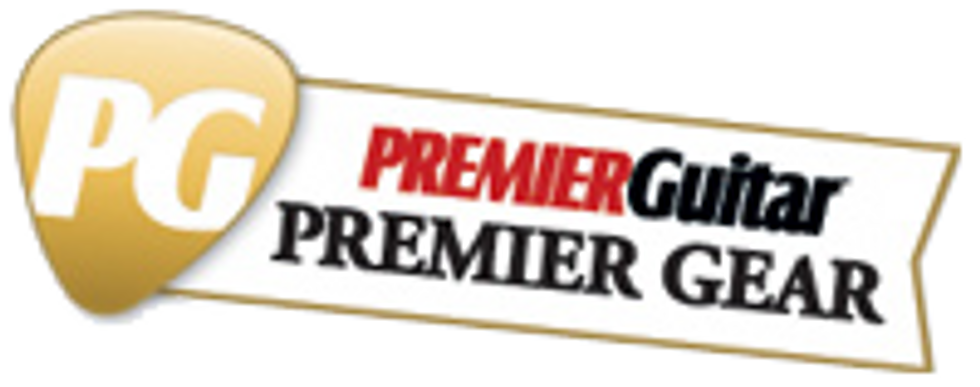
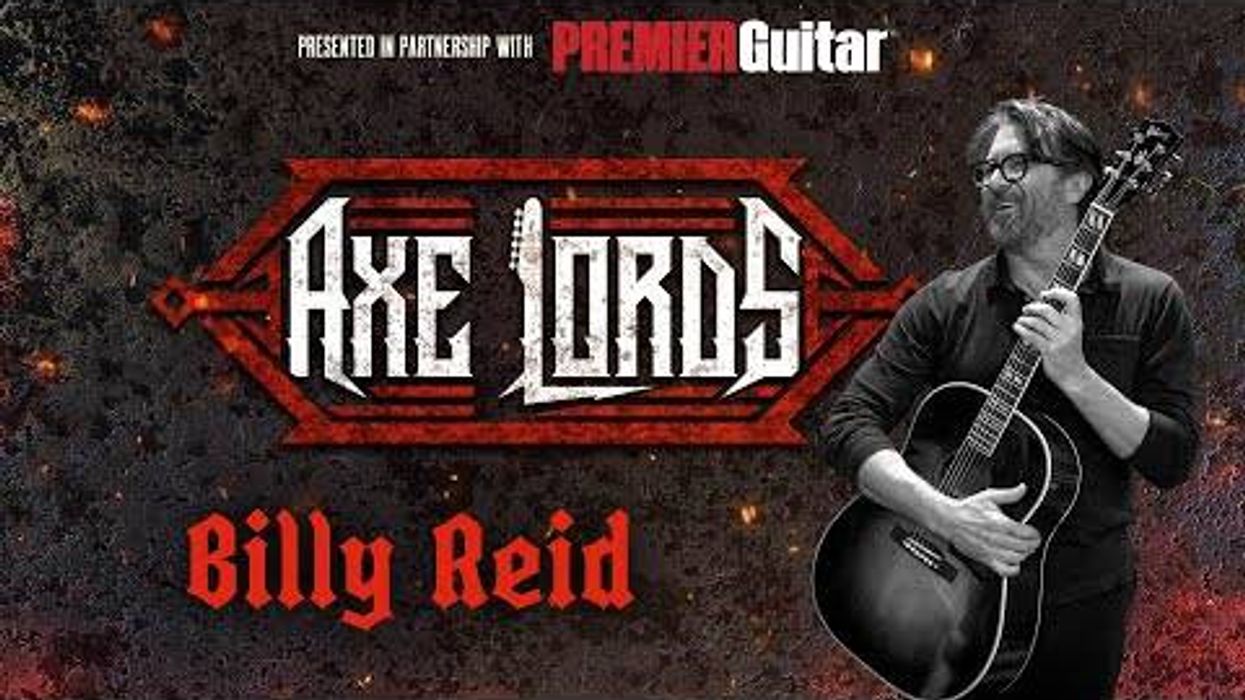



![Rig Rundown: AFI [2025]](https://www.premierguitar.com/media-library/youtube.jpg?id=62064741&width=1245&height=700&quality=70&coordinates=0%2C0%2C0%2C0)












 Shop Scott's Rig
Shop Scott's Rig

